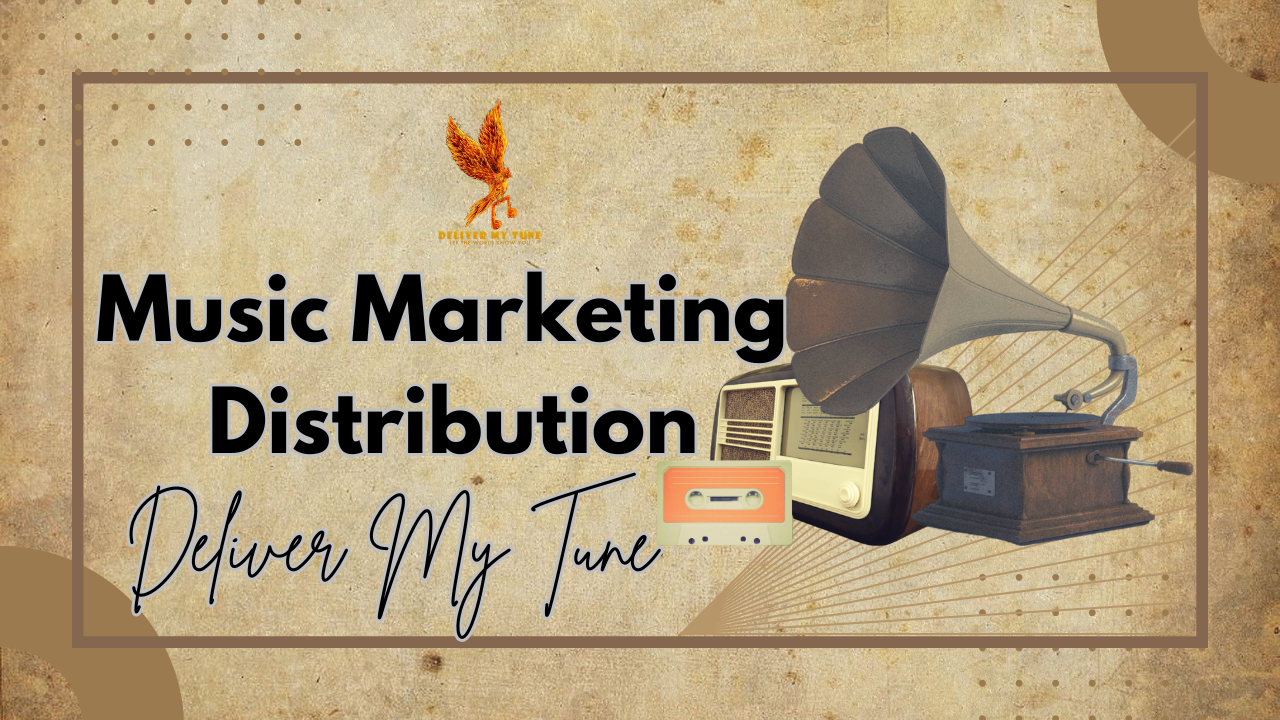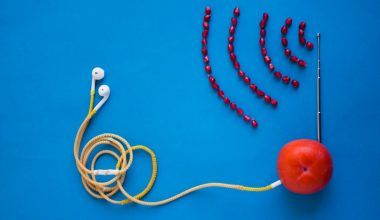Introduction to Music Marketing Distribution
Music marketing distribution is a crucial aspect of every artist’s journey. It ensures your music is available on the right platforms, reaches the correct audience, and maximizes your earnings. Whether you’re an independent musician, part of a label, or a beginner navigating the music industry, understanding the nuances of distribution is essential.
In this guide, we will delve into:
- The basics of music marketing distribution.
- Strategies to enhance your reach.
- Tools and platforms available for independent artists.
- Challenges and ways to overcome them.
By the end of this blog, you will have a clear roadmap to successfully distribute and market your music globally.
What is Music Marketing Distribution?
Simply put, music marketing distribution is the process of making your music accessible to listeners. It bridges the gap between music creators and their fans by ensuring your tracks are available on streaming services, digital stores, and sometimes, physical formats.
The Evolution of Music Distribution
- Traditional Distribution: Physical formats like vinyl records, cassettes, and CDs.
- Digital Revolution: The rise of platforms like Spotify, Apple Music, and Amazon Music transformed distribution into a global digital service.
- DIY Platforms: Artists now have the power to self-distribute their music through websites like Bandcamp and services like DistroKid.
Importance of Music Marketing Distribution
1. Global Accessibility
Digital distribution allows your music to reach listeners worldwide without the need for physical stores. Services like Spotify and Apple Music ensure a global audience can access your work.
2. Revenue Generation
Distribution ensures you earn royalties from streams, downloads, and sales. A fair distribution process can make a significant difference in your income.
3. Brand Building
Having your music on major platforms builds your reputation as an artist. It also makes you discoverable to new audiences.
4. Data Insights
Platforms provide analytics like listener demographics, popular tracks, and playlist placements. These insights can shape your future marketing strategies.
Keywords in this section: music marketing distribution (3), platforms (2), royalties (1).
Types of Music Marketing Distribution
1. Digital Distribution
Distributing your tracks across digital platforms is the norm today. It allows instant access for listeners and simplifies the management of royalties and analytics.
- Examples: Spotify, Amazon Music, Apple Music.
2. Physical Distribution
Although niche, physical formats like CDs and vinyl remain relevant for certain audiences and events like fan meet-ups and concerts.
3. Hybrid Distribution
A combination of digital and physical strategies ensures that artists cater to diverse listener preferences.
4. Direct-to-Fan Distribution
Using platforms like Bandcamp, you can sell music directly to fans, cutting out middlemen and maximizing revenue.
Choosing the Right Distribution Platform
Factors to Consider:
- Platform Reach: Ensure it supports major streaming services.
- Payout Policies: Check how much royalties are retained.
- Support for Independent Artists: Look for features like playlist pitching and royalty transparency.
- Ease of Use: The platform should be user-friendly with robust analytics tools.
Popular Music Distribution Platforms
Here are some platforms artists commonly use:
- Deliver My Tune:
Offers lifetime distribution and transparent royalties.
- 100+ platforms supported.
- Additional features like social media profile linking.
- DistroKid:
Known for its speed and efficiency in uploading music.
- Affordable annual subscription.
- TuneCore:
Caters to new and experienced artists.
- Provides detailed analytics.
Keywords in this section: music marketing distribution (2), platforms (4).
Best Practices in Music Marketing Distribution
Success in music distribution requires more than just uploading tracks. Here’s how you can maximize your reach:
1. Create Quality Music
Focus on production quality. Mastering tools ensure that your music sounds polished and professional. Services like AI mastering can help refine your tracks.
2. Optimize Metadata
Correct tagging with keywords and descriptions improves discoverability on platforms like Spotify and Apple Music.
3. Leverage Pre-Save Campaigns
Encourage fans to pre-save tracks, increasing visibility upon release.
4. Collaborate with Influencers
Working with artists and influencers expands your reach.
5. Promote Actively
Use social media, email marketing, and live events to engage with your audience.
Key Challenges in Music Marketing Distribution
- High Competition:
With thousands of tracks uploaded daily, getting noticed is tough. - Royalty Disputes:
Understanding how royalties work on different platforms is crucial to avoid underpayment. - Discoverability Issues:
Without proper marketing, your music risks being buried under new releases. - Metadata Management:
Incorrect or incomplete metadata can hurt your discoverability on streaming platforms.
Keywords in this section: music marketing distribution (1), royalties (1), platforms (2).
Social media plays a crucial role in music marketing. It allows artists to connect with their audience directly.
Platforms to Use:
- Instagram: Reels and stories for behind-the-scenes content.
- YouTube: A hub for music videos and live performances.
- Spotify for Artists: Manage your profile and track analytics.
Tip: Consistent posting and engagement can grow your fanbase organically.
How to Promote Your Music Effectively
- Run Paid Ads:
Platforms like Facebook and Instagram allow targeted ads to reach specific audiences. - Email Campaigns:
Send newsletters about upcoming releases, events, and exclusives. - Live Sessions:
Host live performances or Q&A sessions on YouTube and Instagram to connect with fans. - Collaborations:
Collaborate with artists or content creators to widen your audience reach.
Keywords in this section: music marketing distribution (1), social media (1).
Case Study: A Success Story in Music Distribution
Artist: Ria Verma
An independent artist, Ria used a combination of music marketing distribution and targeted social media ads to promote her debut album.
Strategies Used:
- Playlist Placement: Her music was pitched to playlists on Spotify.
- YouTube Optimization: Engaging thumbnails and SEO-friendly titles attracted views.
- Social Media Content: Regularly posted reels showcasing the creative process.
Result:
Her streams grew from 5,000 to 100,000 in 3 months. This highlights the power of effective marketing and distribution.
Emerging Trends in Music Marketing Distribution
1. AI-Powered Tools
AI mastering and playlist curation are simplifying processes for independent artists.
2. NFTs and Blockchain
Artists are using blockchain to sell music directly, offering fans ownership rights and collectibles.
3. Short Video Platforms
Apps like TikTok are becoming significant for song promotion.
Conclusion
Music marketing distribution is more than a technical process—it’s an art that combines creativity with strategy. For independent musicians, it offers unparalleled opportunities to reach global audiences. By leveraging the right platforms, tools, and strategies, you can ensure that your music is not only heard but also appreciated by listeners worldwide.
Whether you’re a seasoned artist or just starting, mastering the art of music marketing distribution can propel your career to new heights. Start small, stay consistent, and let your music create ripples in the industry.
Keywords in this section: music marketing distribution (2), independent musicians (1), platforms (2).
Introduction to Music Marketing Distribution
Music marketing distribution is a crucial aspect of every artist’s journey. It ensures your music is available on the right platforms, reaches the correct audience, and maximizes your earnings. Whether you’re an independent musician, part of a label, or a beginner navigating the music industry, understanding the nuances of distribution is essential.
In this guide, we will delve into:
- The basics of music marketing distribution.
- Strategies to enhance your reach.
- Tools and platforms available for independent artists.
- Challenges and ways to overcome them.
By the end of this blog, you will have a clear roadmap to successfully distribute and market your music globally.
What is Music Marketing Distribution?
Simply put, music marketing distribution is the process of making your music accessible to listeners. It bridges the gap between music creators and their fans by ensuring your tracks are available on streaming services, digital stores, and sometimes, physical formats.
The Evolution of Music Distribution
- Traditional Distribution: Physical formats like vinyl records, cassettes, and CDs.
- Digital Revolution: The rise of platforms like Spotify, Apple Music, and Amazon Music transformed distribution into a global digital service.
- DIY Platforms: Artists now have the power to self-distribute their music through websites like Bandcamp and services like DistroKid.
Importance of Music Marketing Distribution
1. Global Accessibility
Digital distribution allows your music to reach listeners worldwide without the need for physical stores. Services like Spotify and Apple Music ensure a global audience can access your work.
2. Revenue Generation
Distribution ensures you earn royalties from streams, downloads, and sales. A fair distribution process can make a significant difference in your income.
3. Brand Building
Having your music on major platforms builds your reputation as an artist. It also makes you discoverable to new audiences.
4. Data Insights
Platforms provide analytics like listener demographics, popular tracks, and playlist placements. These insights can shape your future marketing strategies.
Types of Music Marketing Distribution
1. Digital Distribution
Distributing your tracks across digital platforms is the norm today. It allows instant access for listeners and simplifies the management of royalties and analytics.
- Examples: Spotify, Amazon Music, Apple Music.
2. Physical Distribution
Although niche, physical formats like CDs and vinyl remain relevant for certain audiences and events like fan meet-ups and concerts.
3. Hybrid Distribution
A combination of digital and physical strategies ensures that artists cater to diverse listener preferences.
4. Direct-to-Fan Distribution
Using platforms like Bandcamp, you can sell music directly to fans, cutting out middlemen and maximizing revenue.
Choosing the Right Distribution Platform
Factors to Consider:
- Platform Reach: Ensure it supports major streaming services.
- Payout Policies: Check how much royalties are retained.
- Support for Independent Artists: Look for features like playlist pitching and royalty transparency.
- Ease of Use: The platform should be user-friendly with robust analytics tools.
Popular Music Distribution Platforms
Here are some platforms artists commonly use:
- Deliver My Tune:
Offers lifetime distribution and transparent royalties.
- 100+ platforms supported.
- Additional features like social media profile linking.
- DistroKid:
Known for its speed and efficiency in uploading music.
- Affordable annual subscription.
- TuneCore:
Caters to new and experienced artists.
- Provides detailed analytics.
Best Practices in Music Marketing Distribution
Success in music distribution requires more than just uploading tracks. Here’s how you can maximize your reach:
1. Create Quality Music
Focus on production quality. Mastering tools ensure that your music sounds polished and professional. Services like AI mastering can help refine your tracks.
2. Optimize Metadata
Correct tagging with keywords and descriptions improves discoverability on platforms like Spotify and Apple Music.
3. Leverage Pre-Save Campaigns
Encourage fans to pre-save tracks, increasing visibility upon release.
4. Collaborate with Influencers
Working with artists and influencers expands your reach.
5. Promote Actively
Use social media, email marketing, and live events to engage with your audience.
Key Challenges in Music Marketing Distribution
- High Competition:
With thousands of tracks uploaded daily, getting noticed is tough. - Royalty Disputes:
Understanding how royalties work on different platforms is crucial to avoid underpayment. - Discoverability Issues:
Without proper marketing, your music risks being buried under new releases. - Metadata Management:
Incorrect or incomplete metadata can hurt your discoverability on streaming platforms.
Social Media and Music Distribution
Social media plays a crucial role in music marketing. It allows artists to connect with their audience directly.
Platforms to Use:
- Instagram: Reels and stories for behind-the-scenes content.
- YouTube: A hub for music videos and live performances.
- Spotify for Artists: Manage your profile and track analytics.
How to Promote Your Music Effectively
- Run Paid Ads:
Platforms like Facebook and Instagram allow targeted ads to reach specific audiences. - Email Campaigns:
Send newsletters about upcoming releases, events, and exclusives. - Live Sessions:
Host live performances or Q&A sessions on YouTube and Instagram to connect with fans. - Collaborations:
Collaborate with artists or content creators to widen your audience reach.
Case Study: A Success Story in Music Distribution
Artist: Ria Verma
An independent artist, Ria used a combination of music marketing distribution and targeted social media ads to promote her debut album.
Strategies Used:
- Playlist Placement: Her music was pitched to playlists on Spotify.
- YouTube Optimization: Engaging thumbnails and SEO-friendly titles attracted views.
- Social Media Content: Regularly posted reels showcasing the creative process.
Result:
Her streams grew from 5,000 to 100,000 in 3 months. This highlights the power of effective marketing and distribution.
Emerging Trends in Music Marketing Distribution
1. AI-Powered Tools
AI mastering and playlist curation are simplifying processes for independent artists.
2. NFTs and Blockchain
Artists are using blockchain to sell music directly, offering fans ownership rights and collectibles.
3. Short Video Platforms
Apps like TikTok are becoming significant for song promotion.
Conclusion
Music marketing distribution is more than a technical process—it’s an art that combines creativity with strategy. For independent musicians, it offers unparalleled opportunities to reach global audiences. By leveraging the right platforms, tools, and strategies, you can ensure that your music is not only heard but also appreciated by listeners worldwide.
Whether you’re a seasoned artist or just starting, mastering the art of music marketing distribution can propel your career to new heights. Start small, stay consistent, and let your music create ripples in the industry.
Related Articles:
For further reading, explore these related articles:
- How to Become a Successful Music Artist in India in 2024?
- Promo Cards on Spotify: A Game Changer for Artists
- Understanding ISRC Codes and Their Importance in Tracking and Distributing Your Music
For additional resources on music marketing and distribution, visit Deliver My Tune.






